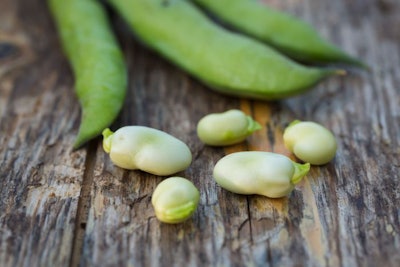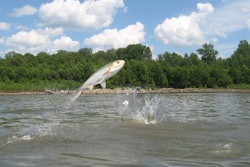
Fava beans (Vicia faba) may become another novel pet food ingredient in dog food formulators’ grain-free or plant-based protein arsenals. Scientists ran an experiment to understand how dogs’ digestive systems handled fava beans, also called faba and broadbeans, at various proportions in dog food.
“It appears fava beans were well tolerated at all levels tested and only influenced digestibility at higher levels,” study co-author Greg Aldrich, PhD, Kansas State University grain science professor and Petfood Industry contributor. “The dehulled fava beans in our study processed well in extrusion. They would be a solid contributor as an ingredient choice in modern pet foods.”
Pet food formulation using fava beans
In the fava bean dog food experiment, 12 Beagles were fed one of four diets over a period of 14 days. Then, the experiment was replicated four times switching between each of the diets. Those diets included a control with no faba beans, and diets with 10, 20 and 30 percent faba beans in place of rice in the recipe.
The dogs’ dietary intake, fecal output and stool consistency were the same across all four diets. Apparent total tract digestibility of dry matter, a measure of how well the gut processes food, was highest for the control (89.3 percent), intermediate for 20 percent fava beans (88.9 percent), and slightly lower for dogs fed the 10 and 30 percent diets (average 88.1 percent). The Journal of Animal Science published the study results.
Fava beans as dog food protein ingredient option
Grain-free pet food has become a major trend in consumer demand, which creates a challenge for pet food brands to find alternative novel pet food ingredients.
“Fava beans represent a new option in the pantheon of grain-free ingredient choices,” Aldrich said.
Meanwhile, as people and pet populations grow, so too does the demand for protein. To meet that demand, plant-based proteins may become increasingly important sustainable pet food protein sources.
Fava beans probably could play a role similar to soybeans in dog food, although his study didn’t analyze nutrients or compare fava beans to other legumes, Aldrich said. Fava beans may provide complimentary essential amino acids to corn, so that a food containing both would fulfill dogs’ protein production prerequisites. Essential amino acids are certain molecules that a dog’s own body cannot produce, but that the animal needs to create proteins.
“Fava beans could certainly be a part of a complete diet with or without animal proteins,” said Aldrich.
However, pet food formulators would need to conduct more analysis to determine what role fava beans could serve in replacing meat protein in vegetarian or vegan dog foods, he said.


















